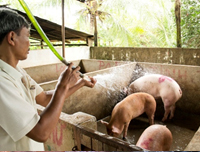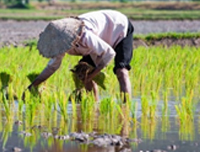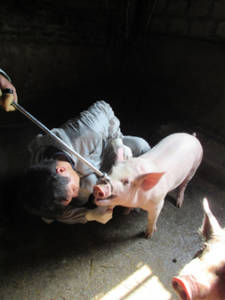Identify the role of climatic factors and agricultural practices change in the modulation of the incidence of water-borne diseases (such as leptospirosis)
Context
It is clear that a rational design of prevention and control measures is based on the identification of sources of infection, of risk factors and that the dynamic epidemiology requires a surveillance system. By definition, prevention and control measures must be adapted to each context. For example the risk of transmission can be minimized by wearing boots, by the attention that must be paid to the quality of the water but these options are impractical for farmers working in rice fields. It is why awareness about the disease and the risk of infection among clinicians, population (including risk groups) and public health decision makers should be an effective approach to reduce the risk of infection.
Leptospirosis is a prototype of neglected disease of unknown but probably considerable impact on human and animal health. Therefore, the use of mathematical modeling for assessing the overall risks and the burden of the infection, as initiated by WHO, will be a valuable tool for the future design of intervention and adequate control measures.
Several studies, including the Vietnamese component of ECOMORE 1, on leptospirosis have already been initiated in Vietnam:
-
A joint research team of the Institut Pasteur in Ho Chi Minh City, the University Nong Lam and the International Livestock Research Institute (ILRI) has completed [2013] a three-year study on risk factors of leptospirosis that show that farmers and slaughterhouse workers are not aware of the disease.
-
In 2012, the IRD (Development and Research Institute) conducted a study on the habitat and the prevalence of the disease in Cambodia, Laos and Thailand. The sampling of more than 3,000 rats of which 11% were positive, was used to compare the incidence of the disease in different environments.
-
The National Veterinary Diagnostic Center conducted a study on goats raised traditionally in northern Vietnam and showed that 36.7% of the animals have been tested positive.
-
In 2014, a thesis for the Public Health Master showed, that 49% of samples taken randomly from 300 people from the districts in Thanh Hoa province (located in north of the Central region), showed a recent leptospirosis infection and that abattoir workers have a 7.9 greater risk than the low risk group, farmers raising livestock have a 4.4 higher risk and rice farmers 2.7 times higher.



-
In 2006 a sero-epidemiological study in children in Binh Thuan province (rice production area of the south coast) shows 12.8% of recent infections in a population of 960 children. The study concluded the need for better clinical identification and rapid laboratory confirmation.
-
The research which has been conducted at “103” Military Hospital in Hanoi investigated a unknown fever patients. ELISA and PCR testing were used to detect showed that 21.1% (60/285) patients were positive with IgM-leptospira.
Public Health concern

-
During the study conducted under the project ECOMORE I it has been shown an unexpected flow of leptospirosis and hepatitis E among rural people caring for livestock or agriculture. Today, the emergence of Hepatitis E is not yet identified as a major public health problem, but it is clear that leptospirosis is a re-emerging problem.
-
Leptospirosis is typically under-diagnosed and under-reported in Vietnam
-
The risk is, however, potentially high especially in delta areas in Vietnam or other flood areas with high population density.
Relevance of the project
-
The Deltas are home for over 40% of the Vietnamese population with a density of more than 1,000 Hab. / km2 in an area called “rural”; the average of annual population growth rate is still high and is associated with an urbanization of the countryside.
-
Vietnam is one of the five countries of the planet most threatened by climate change (AFD source).
-
The Deltas are a region of intensive agriculture. The development of animal production is unprecedented and pig production is one of the main links of economic development. These livestock activities however lead to risks for water and soil pollution (CIRAD source).
-
The Central region of Vietnam is regularly flooded due to the specific geography that is cause of huge water stream after heavy rains.

Primary objective
To assess the epidemiologic status of Leptospirosis and to identify the main risk factors of transmission in various social and climatic environments.
Secondary objectives
-
To estimate the incidence of Leptospirosis in human in selected areas Vietnam
-
To describe the main Leptospirosis serogroups circulating in humans and animals
-
To identify the main risks factors associated for Leptospirosis transmission
-
To improve capacity of NIHE lab and quality control for diagnosis of Leptospirosis
-
To improve clinical diagnosis and management of Leptospirosis at the hospital level and to develop capacity of detecting Leptospira of provincial preventive medicine center’s laboratories.
-
To improve inter-sectoral collaboration between health, veterinary and environmental authorities/private sector
